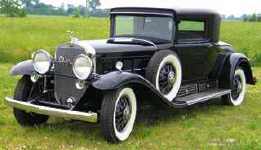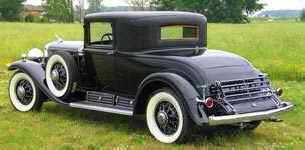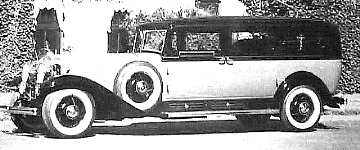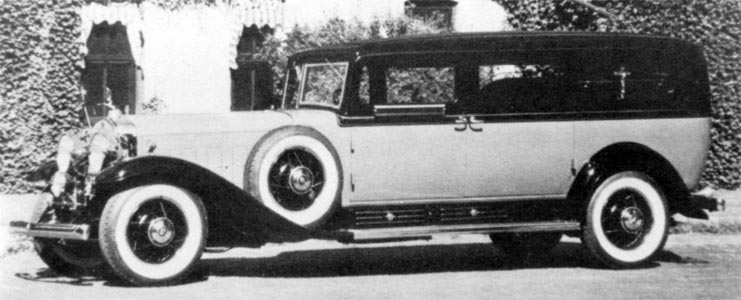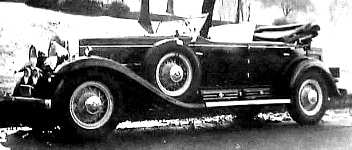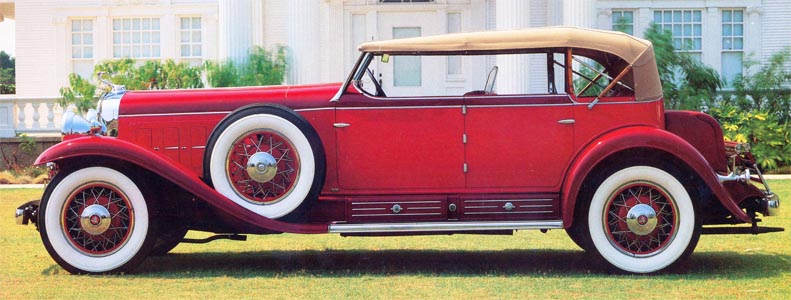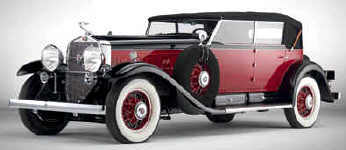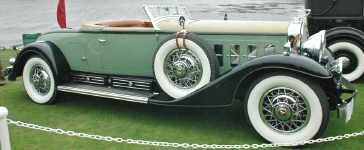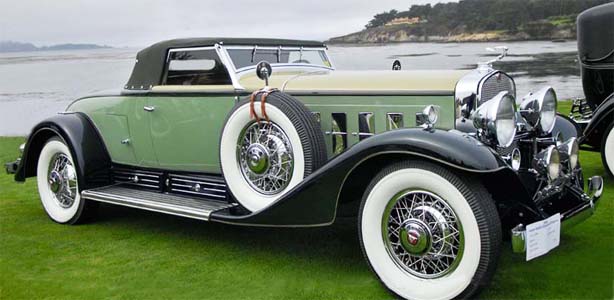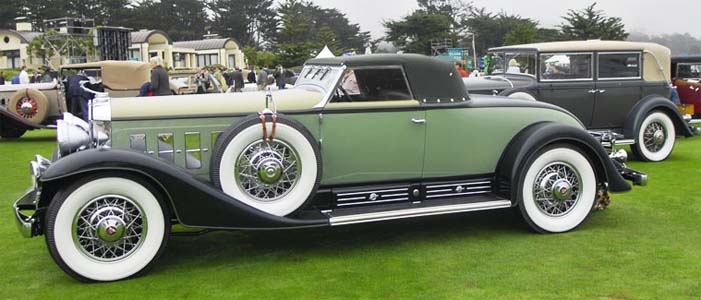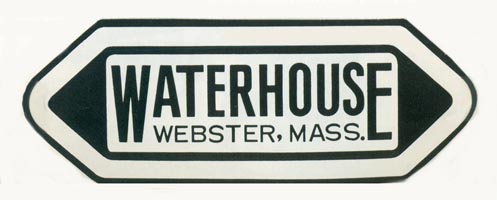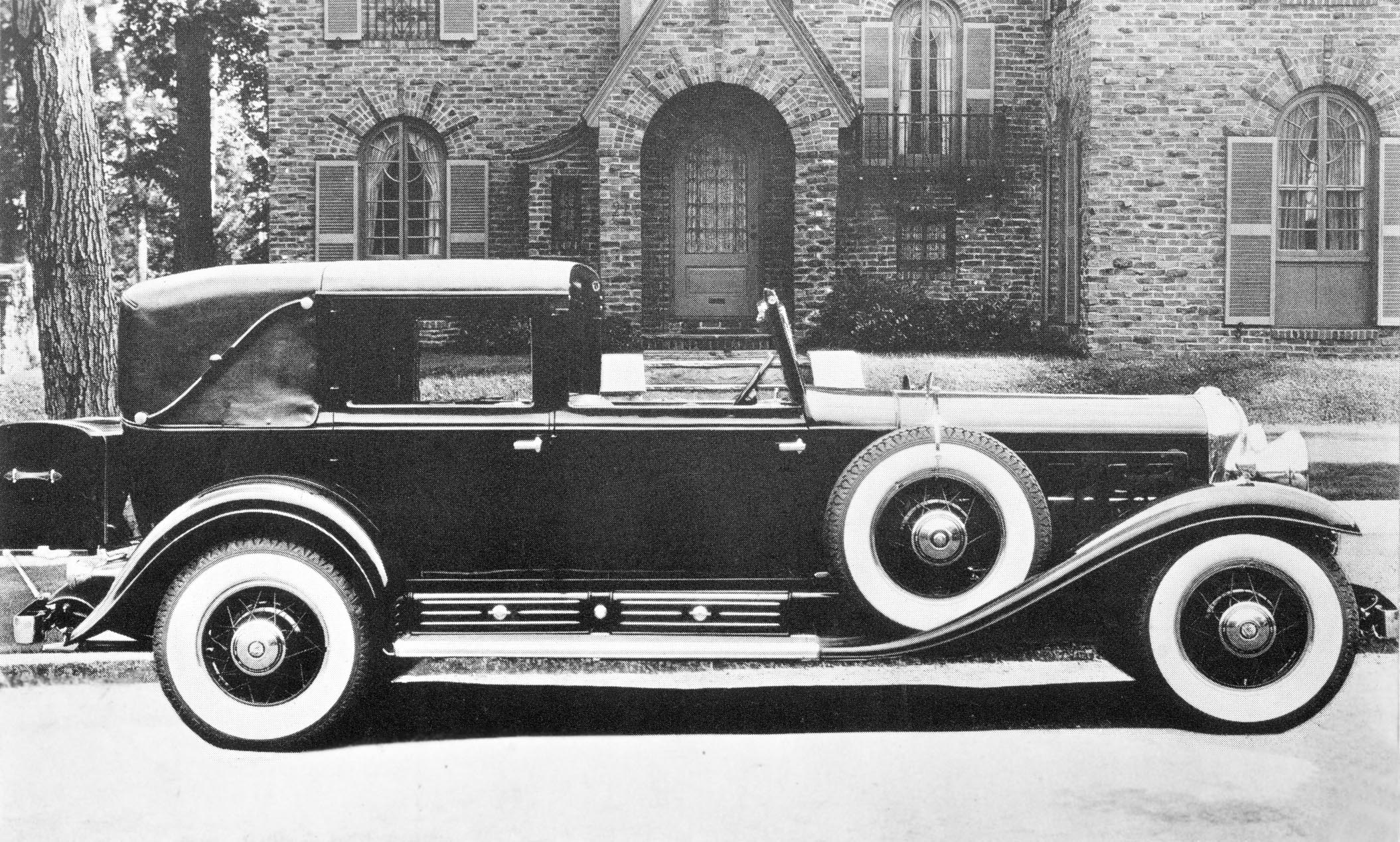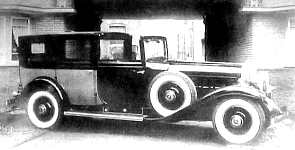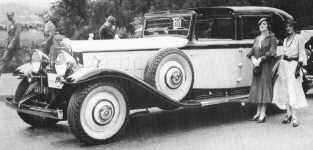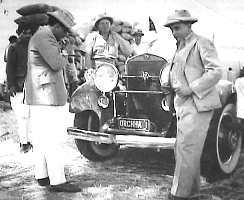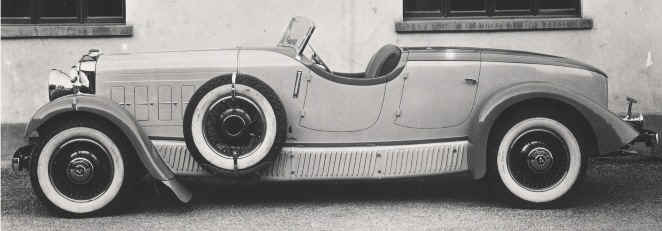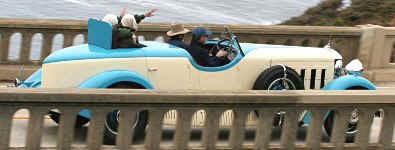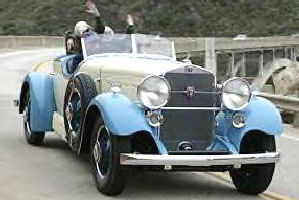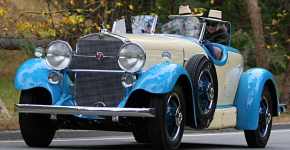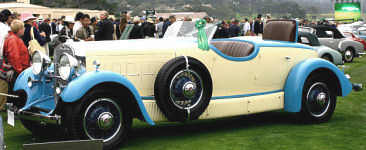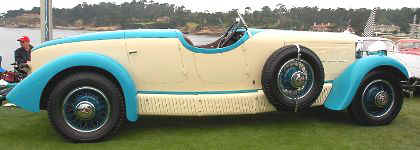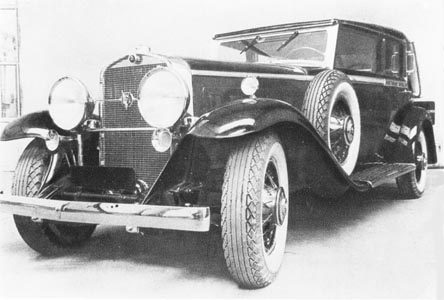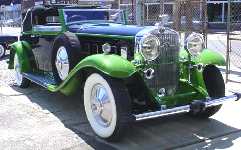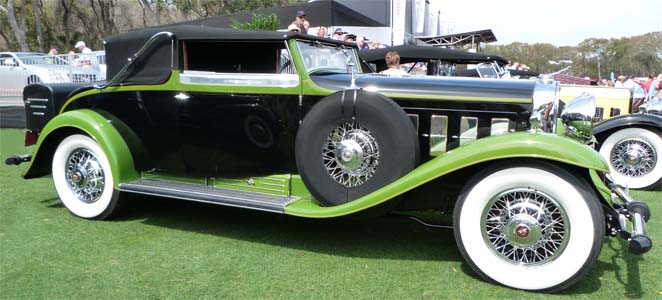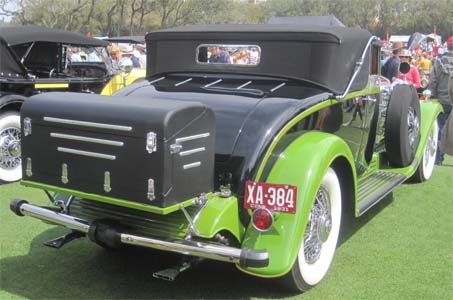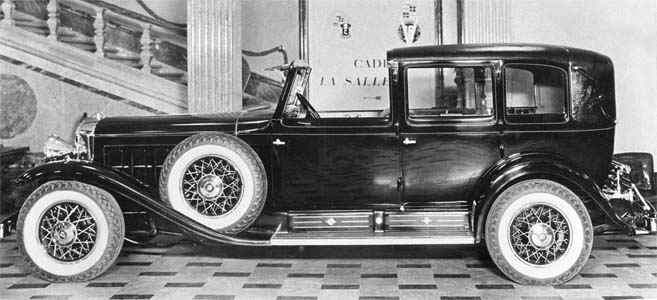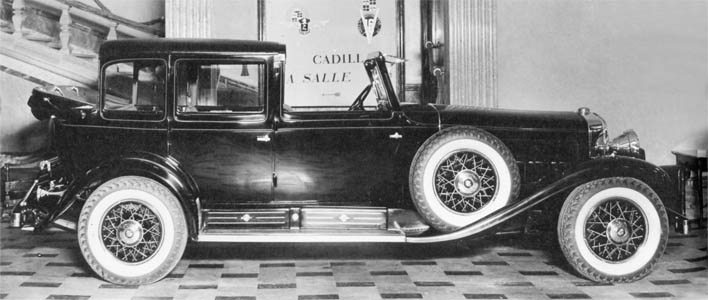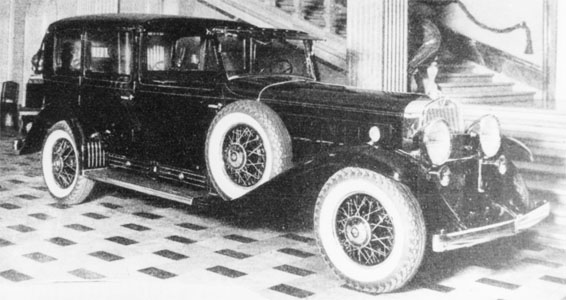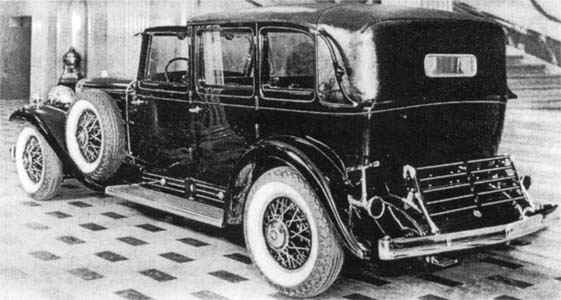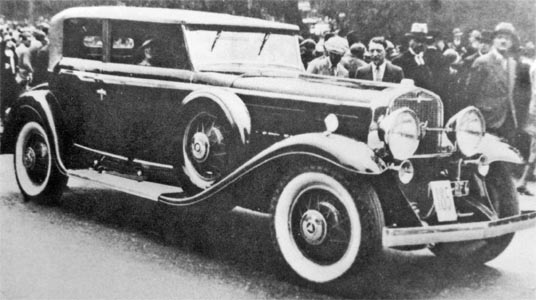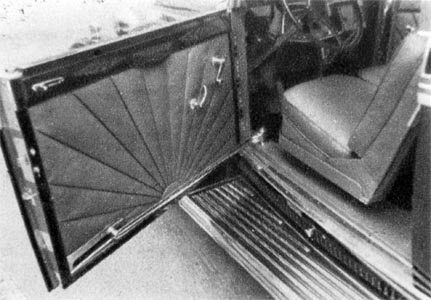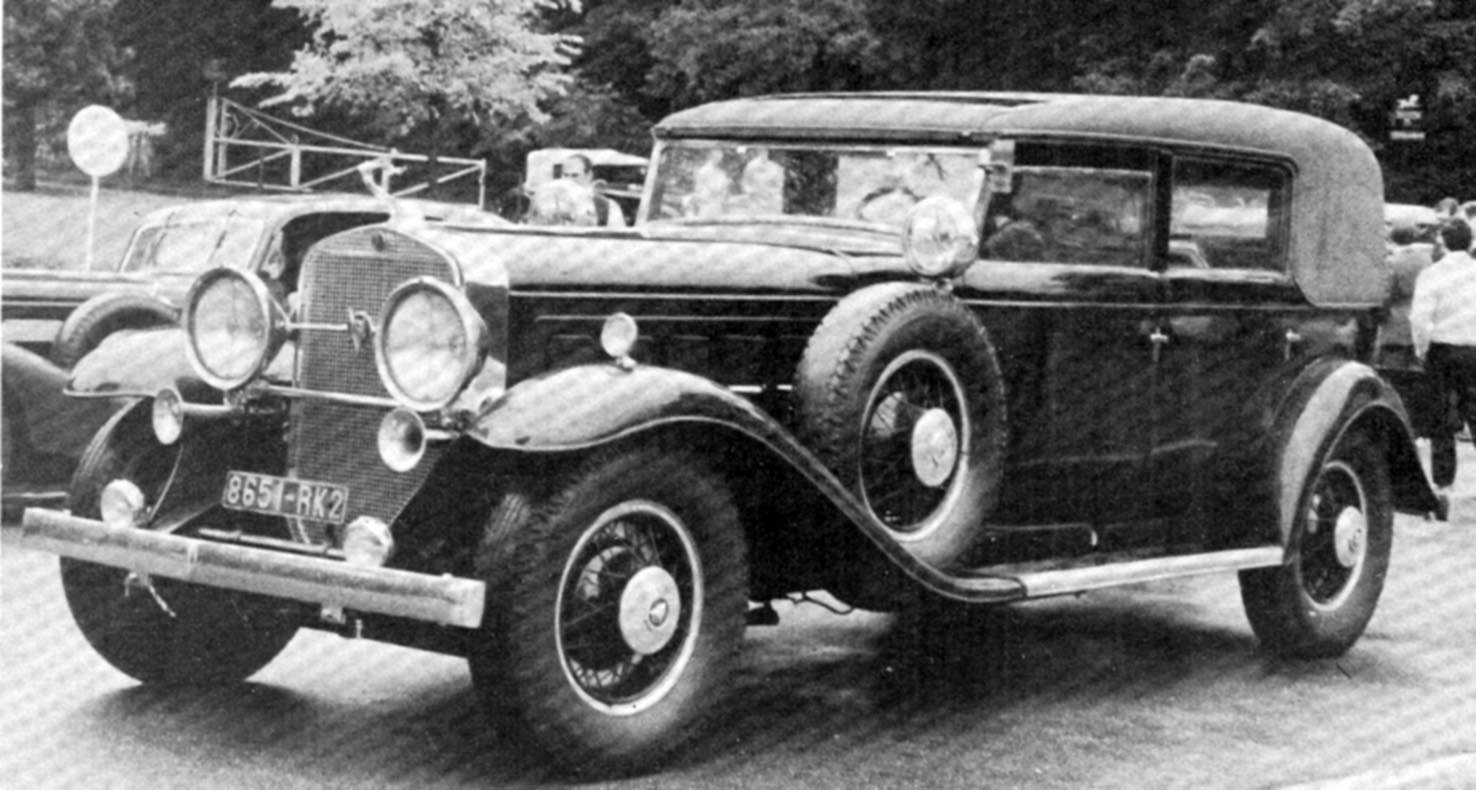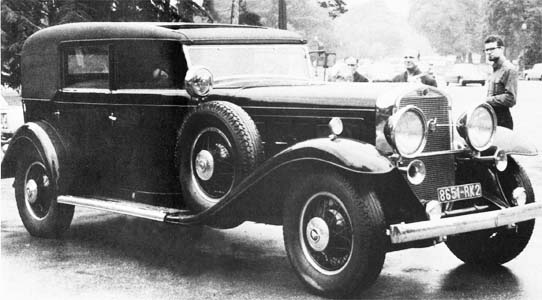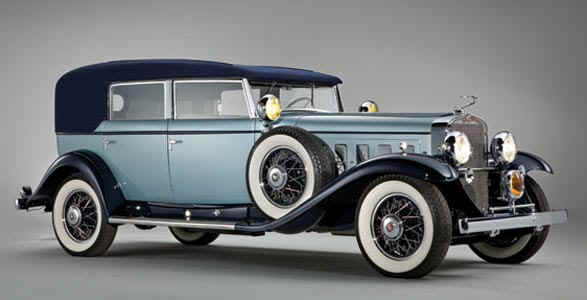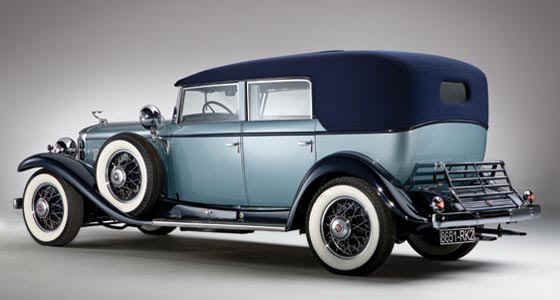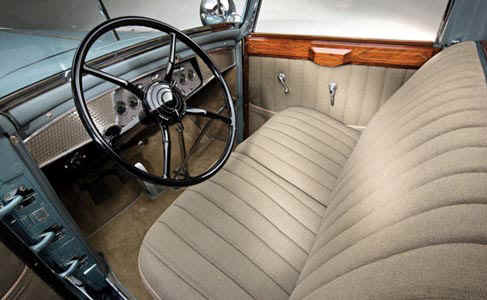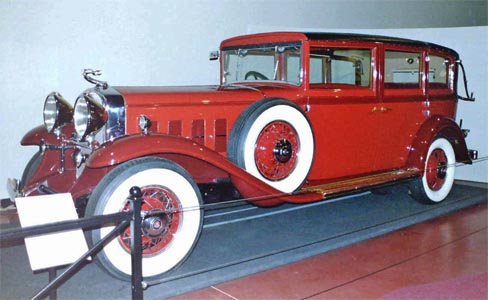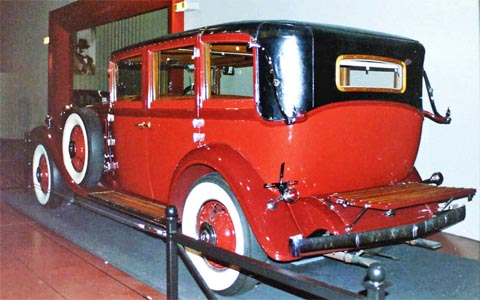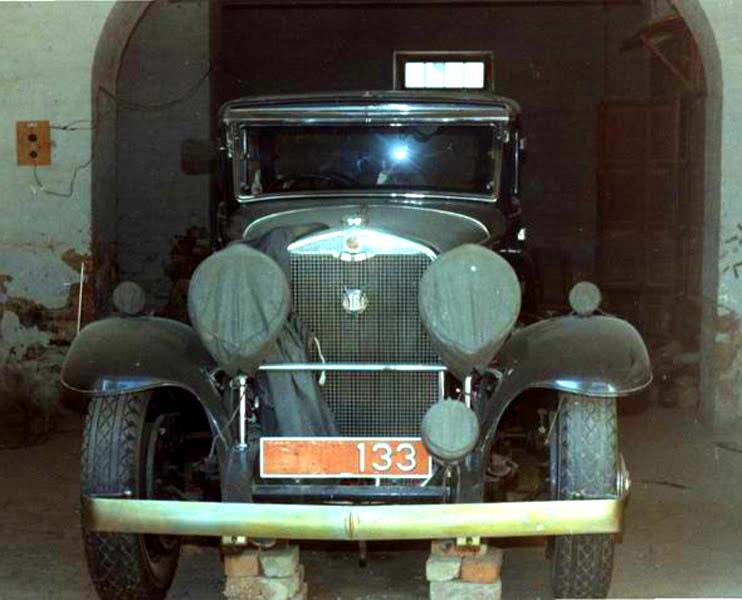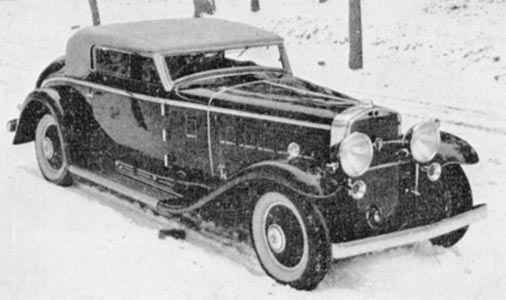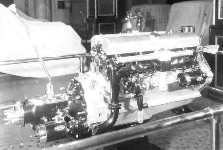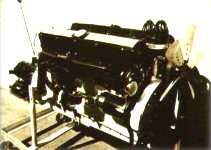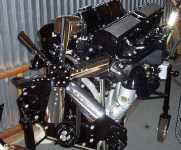UNIQUE
Fisher bodies
|
| Job/Style number |
Body Style |
Units Built |
Notes |
| 30-16-158 |
A regular Fisher-styled 2-pass.coupe; two other unique jobs based on this
Fisher style also are listed below (jobs #2902LS and #LX2904) My line drawing montage
(right) assumes that all the Fisher-bodied sixteens except #30X were mounted on the
"43..." type chassis and got a V-16 hood with five louver doors. This car has
survived; it was reported some years ago in a private collection in R.I. |
1 |
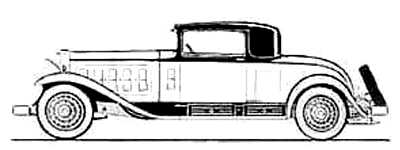
My own impression of what this specially trimmed
Fisher 2-pass. coupe may have looked like
|
| 30-16-162 |
A regular Fisher-styled 7-pass.sedan; one more unique job was built, based
on this Fisher style and is listed below (job #2951LX) My line drawing montage (right)
assumes that all the Fisher-bodied sixteens except #30X were mounted on the
"43..." type chassis and got a V-16 hood with five louver doors |
1 |
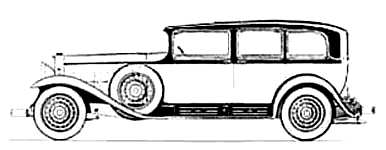
My own impression of what this specially trimmed
Fisher 2-pass. coupe may have looked like
|
| 2651-X |
[special job number]
This car was identified by Carl Steig as a Fisher-bodied 5-pass. sedan, similar to
job # 159. |
1 |
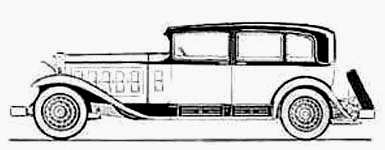
My own impression of what this specially trimmed
Fisher 5-pass. sedan may have looked like
|
| 2901-LX |
[special job] 7-pass. sedan, body by Fisher]; I would assume that all the Fisher-bodied sixteens except #30X were mounted on
the "43..." type chassis and got a V-16 hood with five louver doors |
1 |

My own impression of what this specially trimmed
Fisher 7-pass. sedan may have looked like
(add V-16 hood and "43" type sill)
|
2902-LX
??? |
[special job] Custom
2-pass. coupe which I guess was similar in outward appearance to the regular Fisher style
158. My line drawing montage (right) assumes that all the Fisher-bodied sixteens except
#30X were mounted on the "43..." type chassis and got a V-16 hood with five
louver doors |
1 |
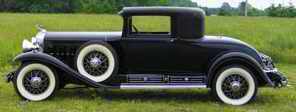
This photo should give an idea of what this specially trimmed
Fisher 2-pass. coupe may have looked like
|
LX-2903
??? |
[special job number]
Custom 2-pass. convertible coupe. My montage (right) assumes that all the
Fisher-bodied sixteens except #30X were mounted on the "43..." type chassis and
got a V-16 hood with five louver doors |
1 |
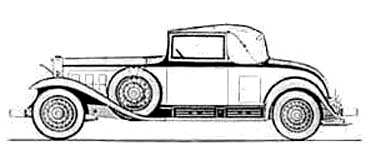
My own impression of what this specially trimmed
Fisher 2-pass. convertible coupe may have looked like
|
LX-2904
??? |
[special job number]
Custom 2-pass. coupe. My montage (right) assumes that all the Fisher-bodied
sixteens except #30X were mounted on the "43..." type chassis and got a V-16
hood with five louver doors |
1 |

My own impression of what this specially trimmed
Fisher 2-pass. coupe may have looked like
|
| LX-2905 |
[special job number]
Custom 5-pass. town sedan, Fisher
order #7877, engine No 702388, for GM exec. C.H. Clise; 2-tone gray, desert sand moldings,
fenders and chassis, Tokyo ivory striping and wheels, delivered to the executive garage (Madame
X styyling features). My libne drawing montage (right) assumes that all the
Fisher-bodied sixteens except #30X were mounted on the "43..." type chassis and
got a V-16 hood with five louver doors |
1 |
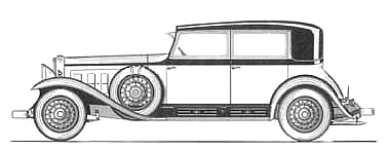
My own impression of what this special Fisher
5-pass. town sedan may have looked like
[note: Madame X style windshield]
|
2911-LX
??? |
[special job number]
Custom 5-pass. sedan similar in outward appearance to Fisher job #159. My line drawing
montage (right) assumes that all the Fisher-bodied sixteens except #30X were mounted on
the "43..." type chassis and got a V-16 hood with five louver doors |
1 |

My own impression of what this specially trimmed
Fisher 5-pass. sedan may have looked like
|
| LX-2913 |
[special job number]
Custom 5-pass. coupe, Fisher order
#7878, engine #702117, plain Wiese upholstery code 2972 Silver Gray, silver leather
piping, spotlight, 2-tone green, silver leaf striping, shipped to Tabor Cadillac,
Hartford, CT, on 21.6.1930 for a Mr. Dewitt Page (Madame X styling features). My
line drawing montage (right) assumes that all the Fisher-bodied sixteens except #30X
were mounted on the "43..." type chassis and got a V-16 hood with five louver
doors |
1 |
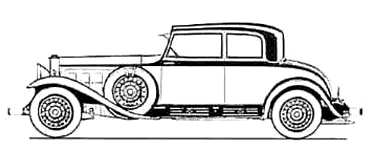
My own impression of what this special Fisher
5-pass.
Victoria coupe may have looked like [Madame X
windshield, like job #LX2905, above]
|
| 2951-LX |
A special, custom 7-passenger sedan
similar in outward appearance to Fisher job #162, built in 1931. My line drawing
montage (right) assumes that all the Fisher-bodied sixteens except #30X were mounted on
the "43..." type chassis and got a V-16 hood with five louver doors |
1 |

This photo gives an ideampression of what this special
Fisher 7-pass. sedan may have looked like
|
| 30-X |
[special job number]
Custom 7-pass. sedan (test car). Factory photo at right shows that unlike the
other custom Fisher bodies on the V-16, this one retained the regular 1930 Cadillac hood
with closely spaced vertical louvers |
1 |

Factory photo of job #30-X
|
UNIQUE Fleetwood
bodies |
| Job/Style number |
Body Style |
Units Built |
Notes |
| 2950-X |
This custom job was built in 1931. I am guessing that this was a
made-to-order special sedan for 7-passengers, using a regular sedan in Fleetwood's
"43..." group In the absence of a build sheet or factory photo, your
guess is as good as mine |
1 |

This photo gives an ideampression of what this special
Fisher 7-pass. sedan may have looked like
|
3289-B
[3289A?] |
Special 7-pass.
town car thought by Jack Triplett to be a re-body job; it is listed in the Master Parts
Book (info: "Cars & Parts", July '72, p.86); "32" indicates
that a 1928 chassis may have been used . There exists a designer's drawing (below) marked "3289A"; could it
have been the basis for this car ?
|
1 |
[ no photos ] |
| 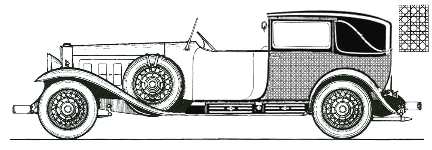
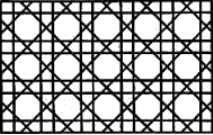
Features of this style (so far as may be determined
by examining the factory designer's drawing)
are a front section quite similar to style #4260 special phaeton and a rear section like
style #4325
town car; the French cane work applied to the rear body and the coach lamps mounted
on either side of the driver's compartment add retro flair to this distinctive town
car style
[ illustration at right shows typical cane design in full size ]
|
| 3981 |
Straight sill, no ¼-windows]; initial digits "39" was used to
identify 1929-30 Fleetwood style cars; this was probably a slightly modified 4-pass. sedanette, like Fleetwood's
1930 Fleetwind on the V-8 chassis. |
1 |
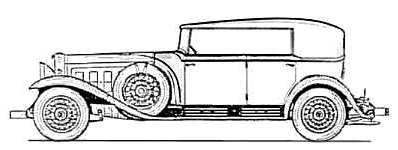
This is a factory drawing I modified to
illustrate this unique Fleetwood job
|
| 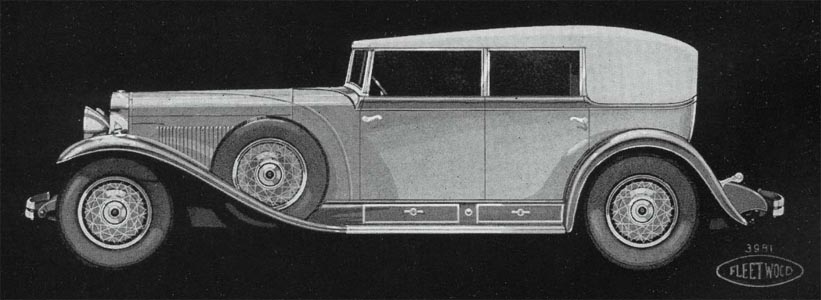 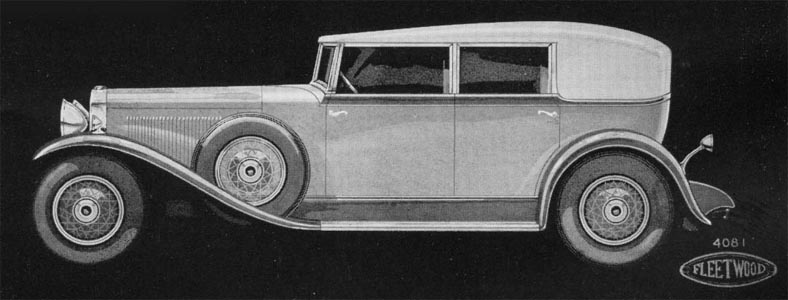
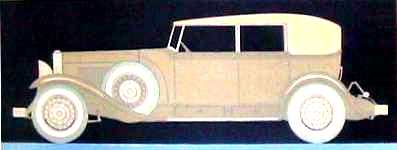 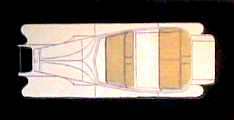
"Fleetwind" cabriolet, style
#3981, a fixed top sedanette cabriolet
version without quarter windows and with a light colored Burbank top over metal;
weight 5,070 lbs; list price $4,500
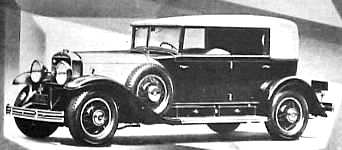 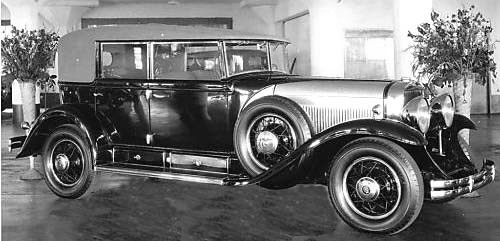
Not sure if these two photos show the same
"Fleetwind" cabriolet; neither picture has been identified with certainty; we do
know that one Fleetwood style #3981
"stationary cabriolet", like this (V8?) model, was fitted with a V-16
engine; it is quite possibly the car on the right; who knows for sure?
|
| 3991 |
This car has
survived; it began life as a regular 1930 Cadillac Fleetwood "Fleetbourne" town brougham for
7 passengers (body #6) but was fitted (later?) with a V-16 motor. |
1 |
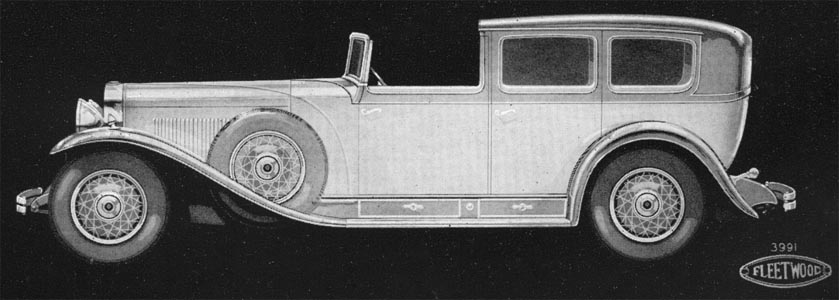
This illustration is from the 1929 book of
Fleetwood designs for the 1930 models
|
| 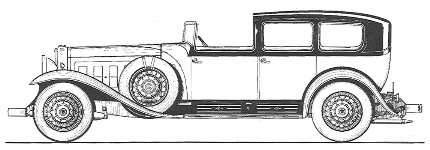 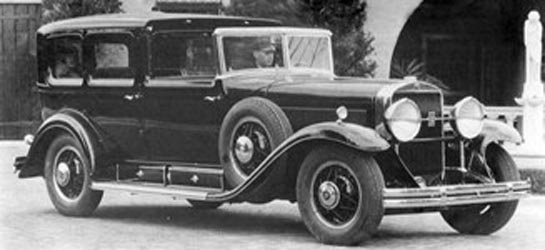
The line drawing at left is of Fleetwood style #4391;
the artist's rendering at the right shows
Fleetwood's "Fleetbourne" town brougham, style #3991 designed
for the V-8 chassis
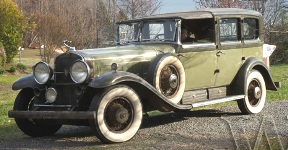 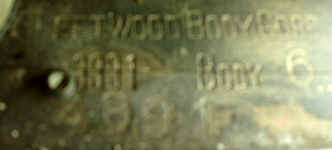
This unique car survived and is owned
at this time [2009] by Rick Kellman
|
| 4155-S [2] |
5-pass. Madame X sedan with almost vertical
"V" windshield and split instrument panel; straight sill, no ¼-windows, no
partition or division glass between driver and rear compartments, robe cord with assist
cords, arm slings, silk umbrella, sheepskin mat, luggage net [production figure of one
unit is my own best guestimate; since car #2 was built in Detroit, with the new, flat,
slanting windshield, and 7 units were built in total, I "guestimate" also that
the remaining 6 units all were built in Detroit (see #4155-S [1] in Part 1j[i]), above)]. Price 1.1.30 = $7125.
|
1 |
[ no photo ] |
| 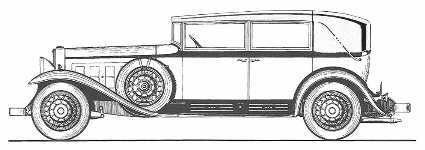
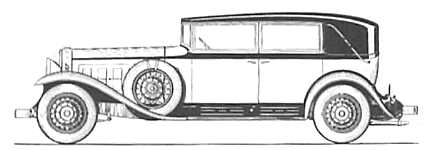
Artist's renderings of both styles #4155-S and
#4155-SC show them with the light-colored Burbank top; nonetheless,
it is believed they all had a black leather roof covering
[as shown at right] like the later, Detroit-built versions
|
| 4161 |
Straight sill, no ¼-windows; this Madame X model was built in
Detroit, as you can tell from the slanting windshield; outwardly similar in appearance to
style #4161-S, but with a partition and division glass between the driver and passenger
compartments (a feature rarely seen in a close-coupled sedan) |
1 |
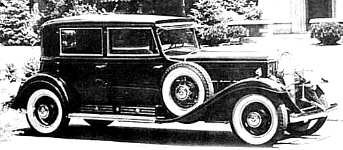
|
| 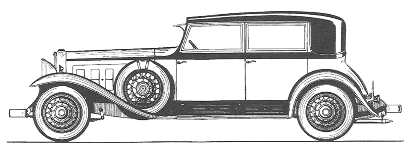
|
| 4200 |
7-pass. limousine (with division). Full details are available on
this page, devoted to Fleetwood's so-called "French
Brougham" |
1 |
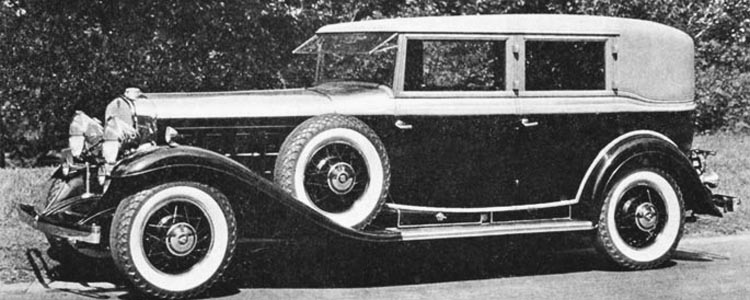
|
|
 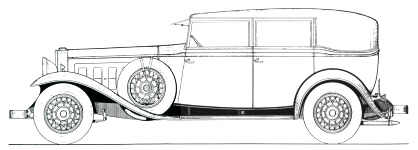
I was able to acquire from V-16 enthusiast and CLC
member, Craig Watrous,
a copy of the original designer's drawing (right) for this unique Fleetwood style
|
| 4206 |
Special 2-pass. stationary coupe with Burbank roof covering but false
landau bars. Styling details include a special belt molding and exposed, chrome-plated
door hinges. The factory drawing does not show the special hinges but does include a long
golf-bag sorage door in the rear quarters (not visible on the photo). Since there is some doubt as to the ID of
styles #4206 and #4207, I decided to give the benefit of the doubt to the designer's
original drawings. |
1 |
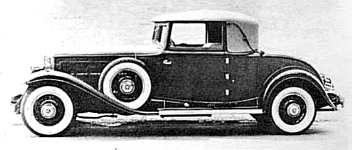
|
| 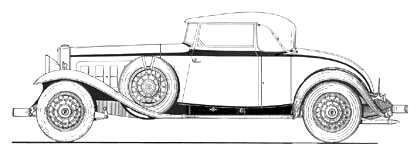
The photo (previous row, right) is ID'd as Fleetwood
style #4207 but the car corresponds in fact to this
designer's drawing, a copy of which was acquired from V-16 enthusiast and CLC
member, Craig Watrous
[ the large, exposed hinges do not appear on the drawing; moreover, and unlike the
drawing,
the car features stubby windshield posts and painted windshield and window frames ]
|
| 4212-C |
A designer's drawing was included in the copies I got from Craig
Watrous; features include the coach sill common to "42..." sixteens, functional
landau bars; the car is outwardly similar in appearance to style #4212 but has a folding
roof portion over the rear seat passengers.
|
1 |
[ no photo ]
|
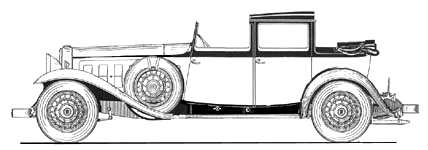 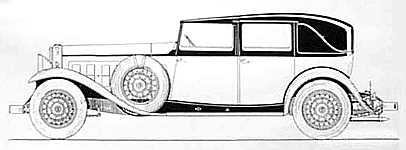
This is like regular style #4212, but with a folding
roof
portion over the rear seat passengers
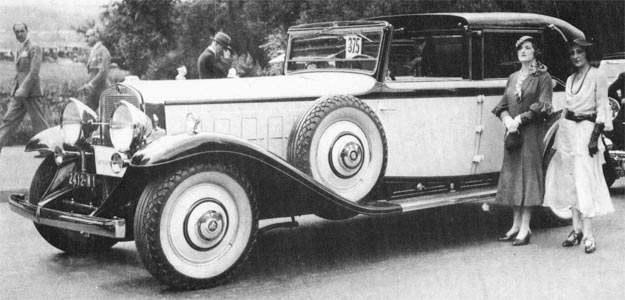
This custom job by French coach builder, Duvivier,
gives a good general idea what the Fleetwood
equivalent would resemble, except that the French custom job has front-hinged
rear doors
|
| 4220-B |
As there was only a minor derivation from regular style #4220, it seems
that no designer's drawing was made. This was a regular town car for seven passengers,
with coach sill and ¼-windows; it differs only in having a plain, painted metal roof (no
leather roof covering at nolandau bars); it is outwardly similar to style #4220.
|
1 |
[ no photo ]
|
| 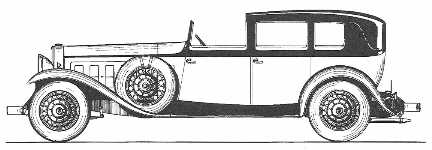
|
| 4225-C |
The designer's drawing for this style was included with the batch of
copies I got from Craig Watrous. The car is outwardly similar in appearance to style #4225
but with a folding roof portion over the rear seat passengers. |
1 |
[ no photo ]
|
| 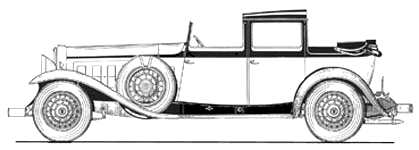
|
| 4257 |
The artist's drawing for this Fleetwood design for a
convertible touring car is sxciting ... but was the car ever built. We know
a number of them saw the light of day, each with unique styling. |
1 |
[ no photo ]
|
|
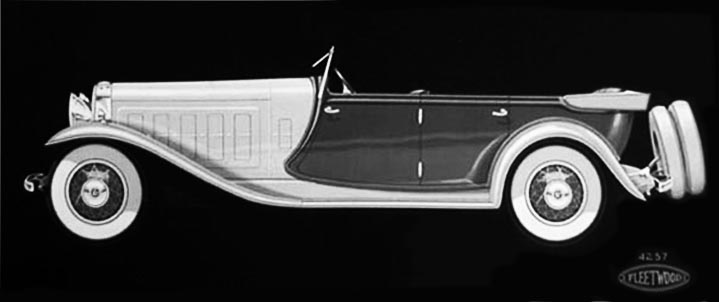
This is an artist's drawing of proposed Fleetwood
style #4257
|
| 4257-A |
This is a custom sport phaeton style with a secondary folding cowl
and
second folding windshield; there is no belt molding although not visible in this low
resolution, compressed digital image. With its straight sill, this car is an exception to
the Fleetwood "42..." group, as is style 4257-Hs, below. This car
may have been a conversion of Fleetwood style 4257-H3, below. Two cars
designated
"4257" have survived; they appear to share some common styling characteristics with this
custom job. |
1 |
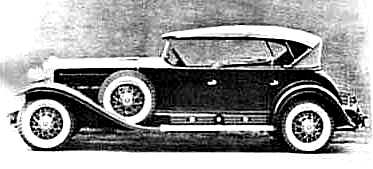
|
|
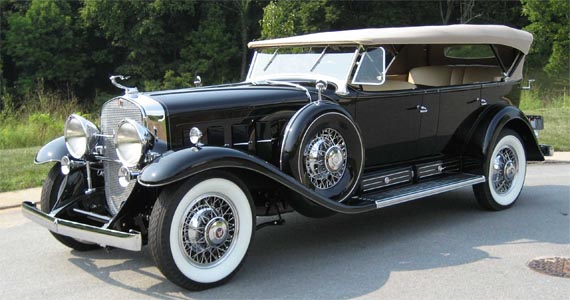
This could be a conversion of the latter
custom job
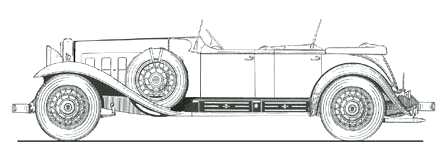
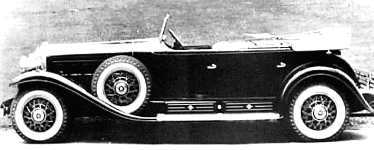
The rear styling on this custom Fleetwood
job #4257-A also is quite different from the surviving car(s) described above
|
| 4257-H |
Large touring cars like this one were built on the V-8 and V-12 chassis.
This is the only one known to have been powered by the V-16 engine. The
suffix "H" usually indicates increased headroom when the top is up. This car (or
a combination of this one and 4257-A, above) may have survived. |
1 |
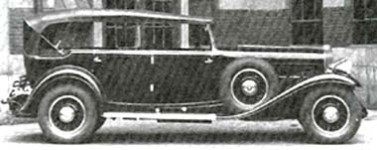
|
|
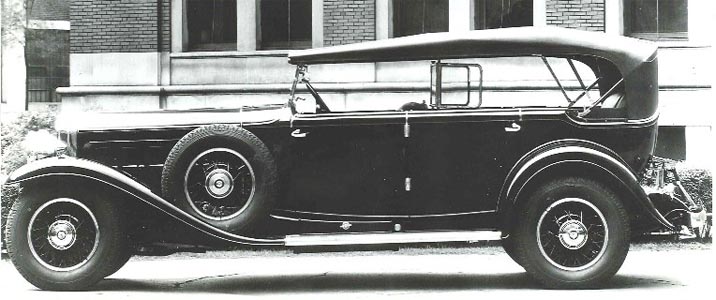
[ Photo: Walter Miller collection ]
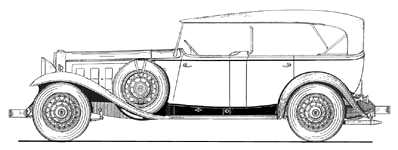
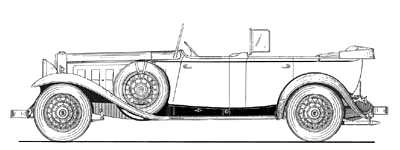
as will be seen from the photo in the preceding
row, the actual car got the correct,
curved or coach sill used on the bulk of Fleetwood styles beginning with
"42...";
above are my own impressions of Fleetwood style 4257-H with the soft top up (left)
and folded back (right)
|
| 4257-H3(?) |
The original designer's drawing (filigree,
right) is
from the collection of V-16 enthusiast and CLC member,
Craig Watrous; it shows this unique touring car style with the horizontal sill
typical of Fleetwood V-16 styles
beginning with the prefix "43...". Below is the actual car (factory
photo); compare the roof height with style 4257-H, above. I
believe the former car had a regular phaeton roof height (circa 49"),
Whereas the designer's drawings with specifications shows an inner roof
height of 53" (consider the style suffix "H3"). |
1 |
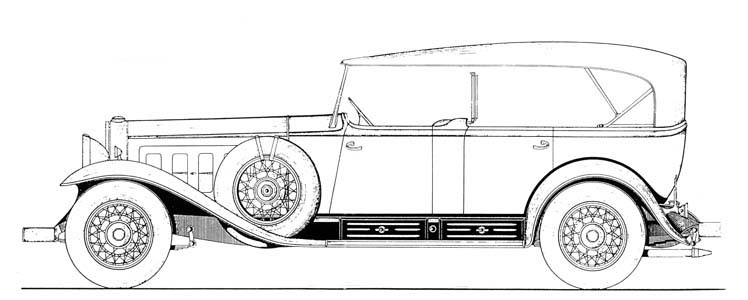
|
|
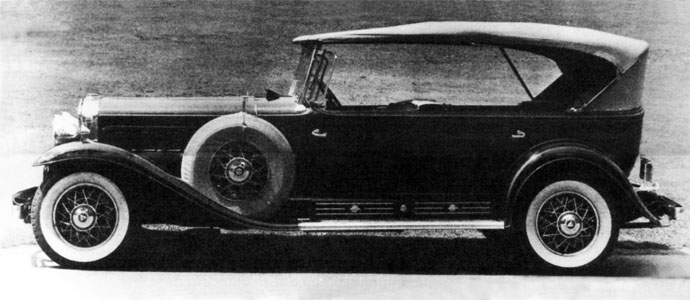
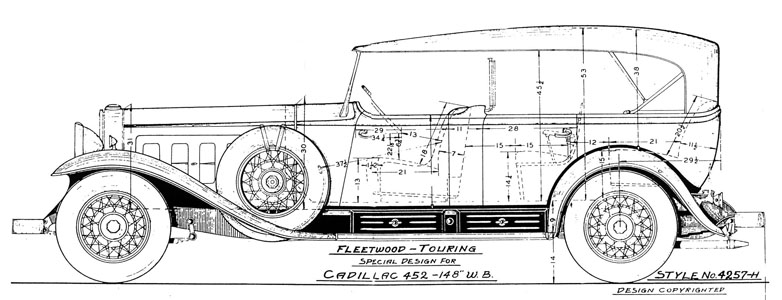
This one is very similar but has rear-hinged front doors,
so probably NOT the same car
note also the increased roof height of the car in the B&W factory photo and
designer's drawing!
[ The actual interior roof height is 53", whereas it was usually 49-50" on
regular Fleetwood convertible models ]
|
| 4260-A |
This special 5-passenger phaeton is similar in appearance to the regular
Fleetwood style #4260 but it features the "Le Baron" hood typical of Fleetwood's
"43..." group of sixteens. It has no belt molding. Unusual in an open car
is the cloth upholstery. This was one of the official cars (NOT the pace car) used during
the Indianapolis 500 race in 1930; it was driven by "Big Boy" Willard Rader |
1 |
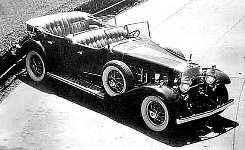
|
| 
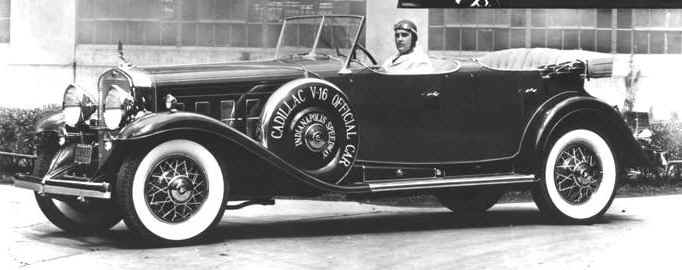
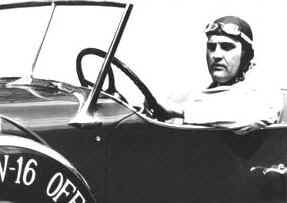
"Big Boy" Will Rader driving the custom
Sixteen at Indianapolis
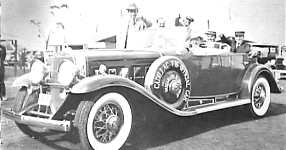 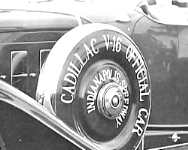
Unique style #4260A was one of the official cars used
during the Indianapolis 500 race in 1930;
here we see it fitted with chrome spare wheel covers and Speedway markings
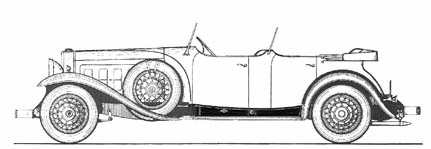
I have seen no original designer's drawing for this
unique style; I made this montage
using the front of a "43..." group car combined with a modified drawing of
regular style #4260
|
| 4262 |
This is a custom. limousine style (division) for seven passengers.
There appear to be no factory photo, artist's rendering or designer's drawing
of this Fleetwood job. The line drawing below is my own impression of the car, based
on the description included in factory records. It had a leather roof covering and no
¼-windows; perhaps also it had a special windshield, as I have shown in this drawing.
|
1 |
[ no photo ] |
| 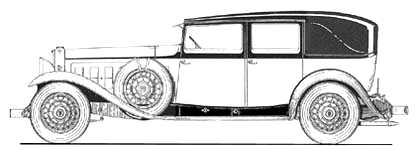
In the absence of an original designer's drawing for
unique style #4262, I created
this montage from style #4275 [windshield and front roof] and #4225 [rear roof]
|
| 4275 |
This is another custom limousine with division, for
seven passengers. The sketch below actually illustrates a Fleetwood
style #4225 town car. Try to imagine that car without the open chauffeur
compartment like Fleetwood style #4375 shown below it.
|
1 |
[ no photo ] |
|
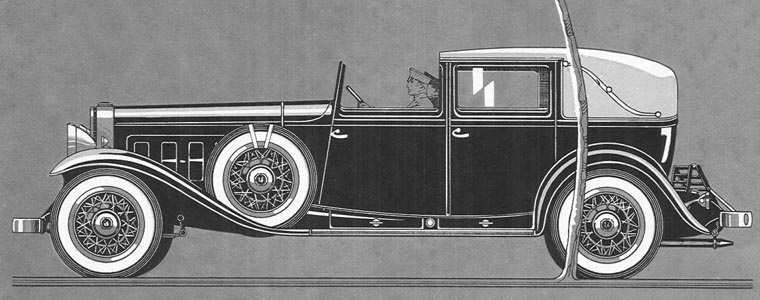

Left: artist's sketch of style #4225 town
car; right: my own modified sketch showing possible general appearance of
style #4275 limousne
|
| 4355-C |
Outwardly, this limousine-landaulet style with division, for five
passengers, must have looked much like style 4355, with the exception of its functional
landau bars, enabling the roof to be folded back over the rear seat passengers |
1 |
[ no photo ]
|
|
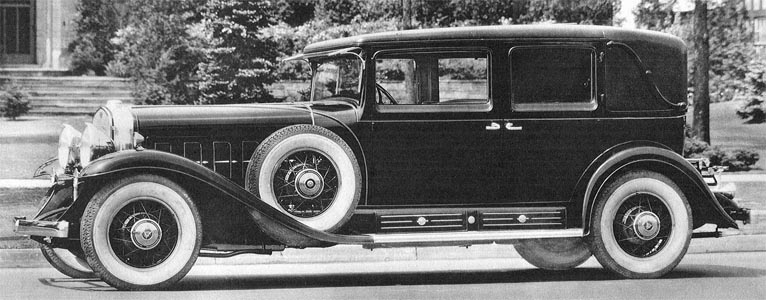
This car but with a folding landaulet roof
portion over the rear passenger seat
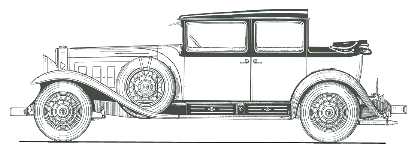
This designer's drawing is for proposed Fleetwood
sedan style #4355-SC; it is part of
the set of copies I got from Craig Watrous; none of the latter style were actually
built
|
| 4412 |
This town car for five passengers is another exception to Fleetwood's
coding system. The straight sill and belt molding normally would place it in the
"41..." group of sixteens, but the latter was reserved for Madame X
styled cars which precluded any open town car styles. My drawing, right, assumes
that the car was similar to style 4312 but without the "Le Baron" hood, like
coupe style #4476.
|
1 |
[ no photo ] |
| 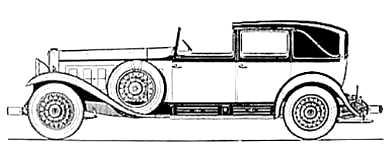
|
| ? |
1928/29 sport
phaeton (body only). This car spent many years in Obie's Auto Museum, on
Long Island, where it was re-discovered and subsequently restored; the "heron"
hood ornament was replaced by a "Goddess"; wind wings were added as were
whitewall tires; door handles were updated form 1929 style to 1930-31. Cadillac enthusiast, Jeff Maltby, photographed the descriptive
placard relating to this car in the Merle Norman collection, San Sylmar, CA, in
2002. It reads: Although technically not available in 1930 this dual-cowl
phaeton body was installed new at the factory. The first purchaser, a band leader of
some repute, convinced Cadillac to install an earlier, unsold body on this V-16 chassis.
Writing in the CCCA monthly "Bulletin" (May, 2004), member Benner Hunt confirmed
that the car was owned once by AMR Max Obie. Mr. Obie had said that the car's
wealthy owner so loved his 1929 Fisher sport phaeton that he had the factory transfer its
body, later, onto a new V-16 chassis. The car is currently (2002) part of the Merle
Norman collection [Jack Nethercutt] in San Sylmar, CA.
|
Fleetwood
special
order |
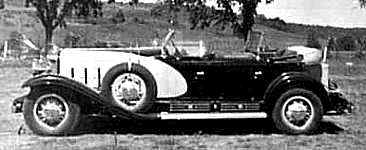
[ Photo: Long Island Auto Museum ]
|
|
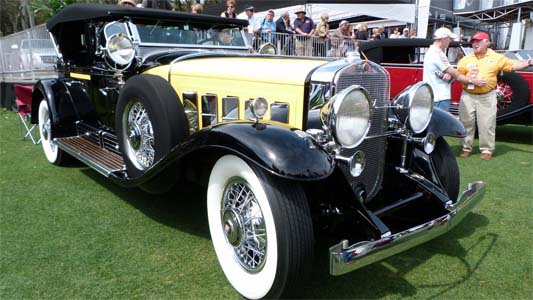
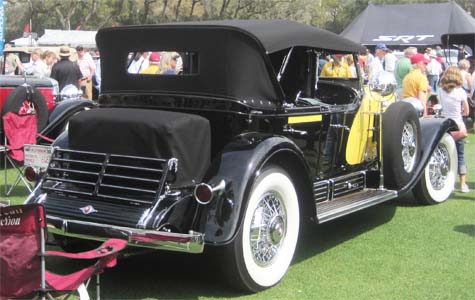
The surviving car o display at Amelia Island Concours
d'Elégance, March 2012
[ Photos: © 2012, Gita Saunders ]
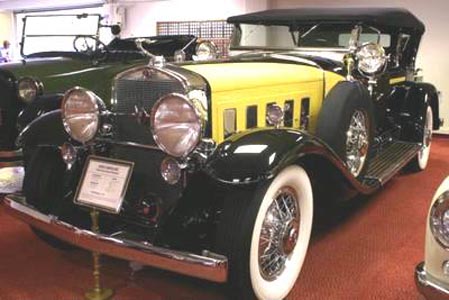
Photo:
Jack Nethercutt collection, San Sylmar, CA
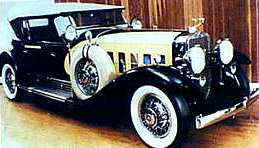
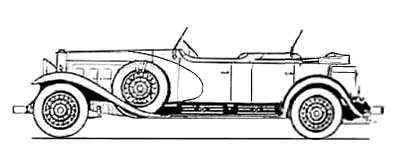
Photo: Kruse auction catalog
and my own line drawing
|
| n/a |
Bare chassis delivered to domestic and foreign coach builders; some of
these have survived [check out the "survivors"
file].
|
32 |
[see below for details] |
| |
Missing data sheets
|
4 |
[see below for details] |
| |
Missing record
|
1 |
[see below for details] |
| |
Grand Total
|
3251 |
1 |
